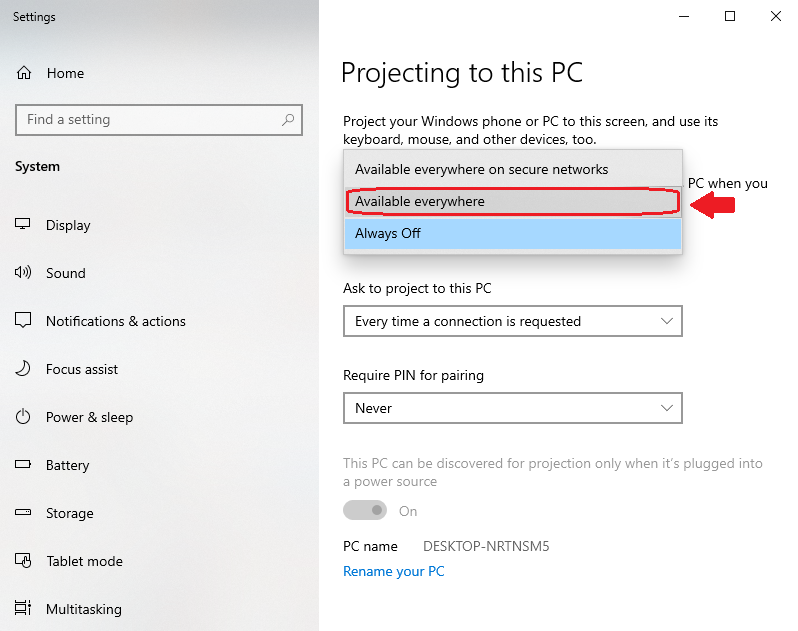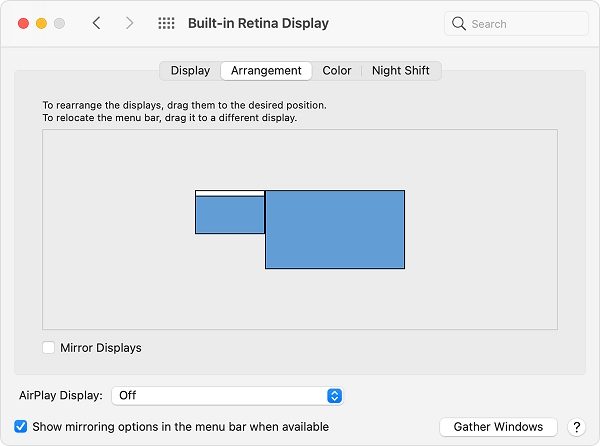Unlike televisions and monitors, laptop screens are not built to take input from other devices, but that does not mean you are totally restricted to do so. There are a bunch of methods that can make your laptop work as a secondary display for your PC. In case you are interested to know how you can use a laptop as a monitor, we are going to cover it all in this article. So, make sure to read this article until the end, and also share it with your friends as well.
How Do I Use a Laptop As A Monitor?
Generally, most laptops have an HDMI connector, but that is basically an HDMI-out port that can only be used to connect other displays with the laptop. So, how can you make your laptop’s screen work as a secondary monitor for your PC? Is it even possible? Yes, it is! No wires are involved in this process, we are only going to use some in-built features of Windows and third-party software for this purpose.
On Windows 10
Method 1: Using Miracast
Miracast is one of the coolest utilities that comes along with all the latest Windows OS versions. This allows your PC to share the screen with other computers over a WiFi connection. You can simply use this application for screen mirroring. However, in this case, we will be using it to make your laptop work as a secondary monitor, let’s see how: Grab the laptop which you want to use as a secondary monitor, and follow these steps carefully:
First of all, Click on the Start button, then click on Settings. In the search bar, type “Projection Settings”, and press Enter. Here, you have to set the first set to “Available Everywhere”, so that other PCs and phones can project to your PC. You can choose to set a PIN if you want, not a necessary step though.
So, after making these necessary changes, your laptop is pretty much ready to be used as a secondary monitor.
Now, there are a few necessary steps to be followed on the main PC that you’ll be using for projecting, have a look:
Open the Action Center by clicking on the Notifications icon. Click on the “Connect” button. Your PC will start looking for all the available Wireless Displays. Click on the name of your Laptop as soon as it appears in the list. Once you click on the laptop’s name on your PC, a request pop-up will appear on your Laptop. Accept the connection request on your laptop. On the main PC, right-click anywhere on the desktop, and click on Display Settings. Under the Multiple Displays section, change the setting to “Extend desktop to this display”.
That’s it! Now, your laptop will act as a secondary monitor for your PC.
Method 2: Using a Third-Party Tool
In the case of an older laptop, using the Miracast method can sometimes be a little complicated. Hence, if that method does not work for you, we have another good alternative for you. By using popular third-party software, Space Desk, you can easily convert your laptop into a secondary monitor for your PC. But, before you proceed with this method, check the system requirements for both the primary PC as well as the laptop. System Requirements: a. For Primary PC
Windows 10 (version 1607 – later only), 8.1 & 7. Graphics adapter NVIDIA/AMD/Intel/Basic Display. WDDM 2.6/2.5/2.4/2.3/2.2/2.1/2.0/1.3/1.2/1.1 DirectX 12/11/10/9
b. For Laptop
Windows 10 / 8.1 / 7 DirectX 10 DirectX WARP (Min. 800 MHz CPU / Min. 512MB RAM)
Now, what’s important to know here is that you must download the right software on both machines to establish a connection for screen sharing. For the Primary PC, you have to download and install the Space Desk Drive Software. Whereas on the laptop, you are required to download and install the Space Desk Viewer Software. Both the software are available in the Download Section on the SpaceDesk Official Website. So, you can simply visit the website and download the right software depending on your Windows OS version. Follow the steps on your main PC and Laptop as mentioned:
Download and Install the right SpaceDesk Software on both machines. Keep the PC and laptop both connected to the same network. Launch the respective software on both machines. Once you launch the software on a laptop, it will automatically detect your Primary PC as well. Click on your PC’s name in the software, and click on the “OK connect!” button.
That’s it! Now your laptop will automatically connect with your PC, and you will be able to use it as a secondary monitor. If the software on your laptop fails to recognize your PC, don’t worry, we have another way around. You can use the Space Desk HTML Viewer on your laptop which is a web-application that serves the same purpose.
Open the Space Desk HTML Viewer on your laptop. Now, launch the Space Desk Drive Software on your Primary PC, and write down the IP address of your computer that is shown in the software. Put the IP address on the web page that you just opened on your laptop. Click on the “Connect” button on your laptop’s screen. This will establish a connection between both the machines and you’ll be able to use the laptop as a secondary monitor.
On mac OS
To set up a dual-monitor environment using your MacBook, you have to keep a few things in mind. First of all, you will need to find the right cable and port adapter to connect a monitor with your MacBook. Once you are done connecting a monitor with your MacBook, follow the steps mentioned below:
Open the Apple Menu. Click on System Preferences. Go to Displays. Click on the Arrangement Uncheck the Mirror Displays Arrange the Displays as desired. You can drag the Menu Bar to the Monitor to make it work as the Primary Display. By doing so, your MacBook’s screen will automatically act as a secondary monitor in this setup.
Benefits of Using a Secondary Screen
You may wonder why do people need a secondary monitor in their computer setup? Well, to clear out this query from your mind, you must have a look at some of the major advantages such a computer setup provides.
1. Use of Multiple programs
As you know, a secondary monitor basically means extra screen space, right? So, in the scenarios where we need to use multiple program windows at the same time, such as Excel Sheets, Word Documents, etc., a single screen is not enough. A multi-screen computer setup offers you the flexibility to open multiple programs at the same time and work on them simultaneously. Such a multi-monitor setup is most loved by Stocks Traders, Streamers, Programmers, etc.
2. Increases Productivity
As we just said, you can use multiple programs at the same time, it is proportional to increased productivity as well. Since you get more screen space and more freedom to open multiple programs, you save a lot of time by not switching various tabs and windows. Instead of opening a program, then switching to another one for a different task, you can simply keep both the programs open on different screens and work on them at the same time.
3. For Digital Marketers…
For Digital Marketers, Traders, Web Designers, Editors, and every other PC user out there, a multi-screen setup benefits in one way or another. With multiple programs opened simultaneously on different screens, you can simply drag and drop files to share them across different platforms and software. There are numerous benefits of using such a setup, and once you start using it, switching back to a single-monitor setup would feel very discomforting.
The Verdict
If your daily working routine involves a lot of multitasking on your PC, a dual or triple-monitor setup will make your life a lot easier. In this article, we have covered the methods to use your laptop as a secondary monitor. However, if you want to have a really joyful and comforting experience, consider buying a new secondary monitor which you’ll be able to connect more easily to your PC. Using a laptop as a secondary monitor is doable, as we showed in this guide, but since a laptop screen and a computer monitor do not match up in size, the setup won’t look that elegant. Wrapping this up here, if you have found this guide helpful, do let us know in the comments section below. If not, don’t hesitate to discuss your queries with us. Comment * Name * Email * Website
Δ







![]()